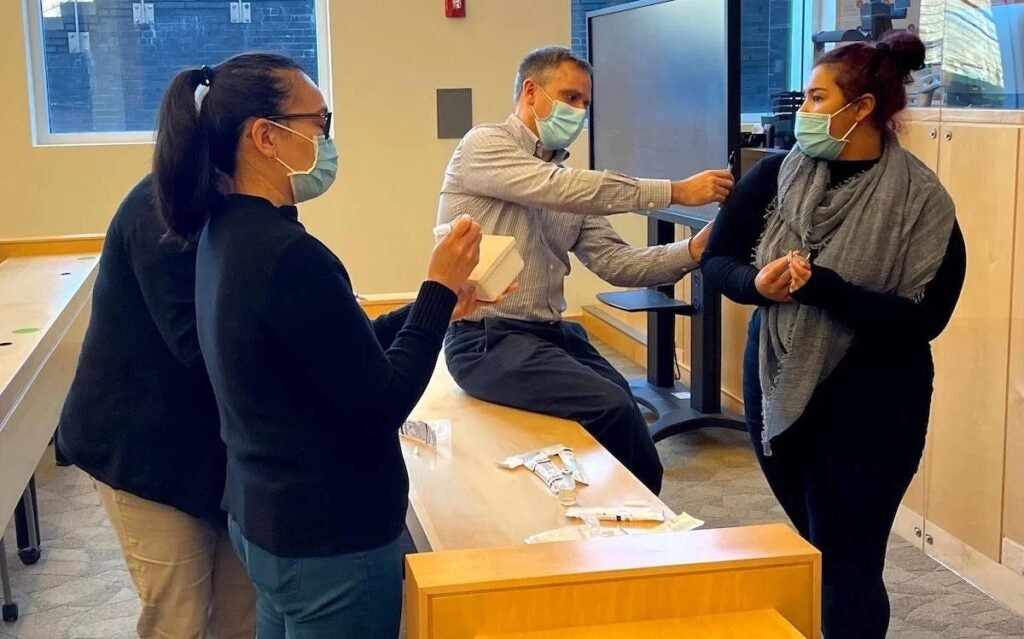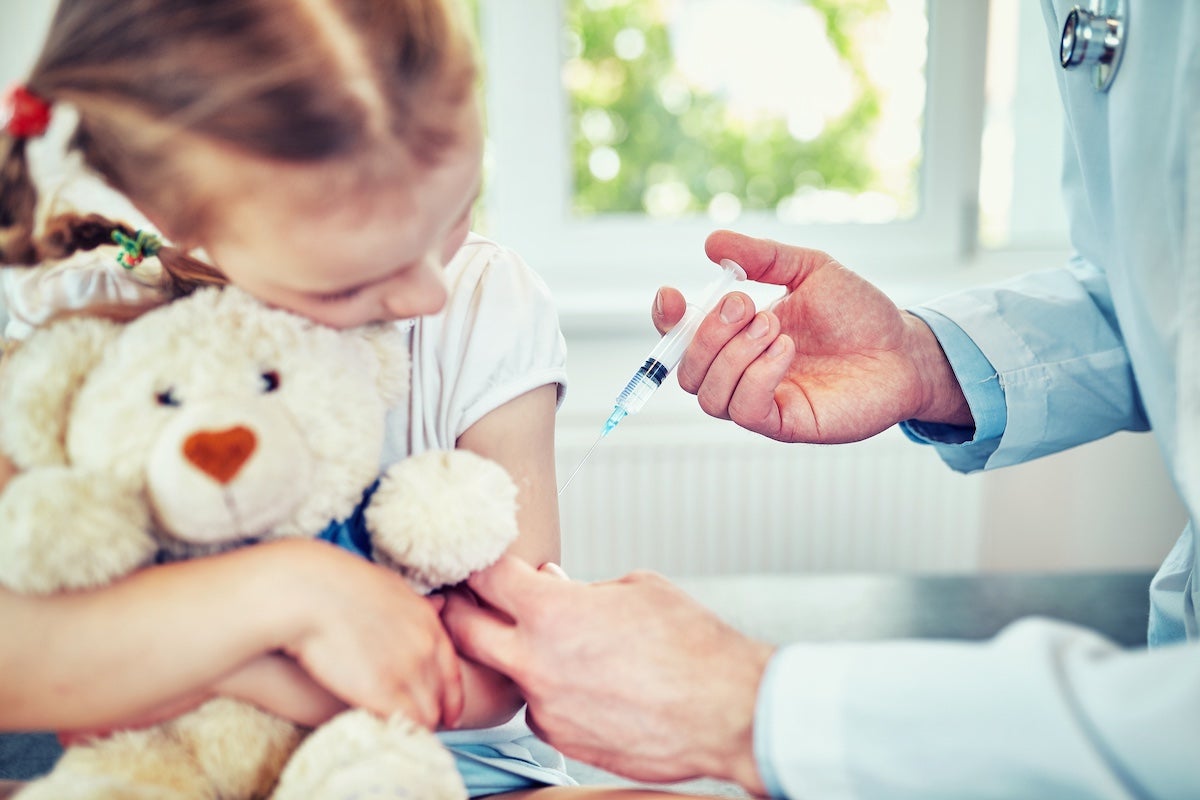URI Pharmacy Professor Jeffrey Bratberg, available for expert interviews, breaks down science on vaccines and dangers of school district exemptions
While vaccines have been shown to be safe and highly effective in protecting against communicable disease, rates of vaccinations among the youngest students have steadily inched down in recent years as parents increasingly seek exemptions from school district vaccine requirements.
Exemption requests hit their highest levels last year, according to the Centers for Disease Control and Prevention, as a record 3.6 percent of kindergarten students were exempted from vaccine requirements, up from 3.3 percent the previous year. Just 92.5 percent of kindergarteners were vaccinated against such highly contagious diseases as measles, rubella and mumps in the 2024-25 school year, the CDC reports. Before the COVID-19 pandemic, vaccination rates among kindergartners were higher than 95 percent—the level needed to make an outbreak unlikely.

What is driving the surge of vaccine exemption requests, and what risk may it pose to children, both vaccinated and unvaccinated? As school districts field more exemption requests ahead of the school year, University of Rhode Island College of Pharmacy Clinical Professor Jeffrey Bratberg breaks down the science of vaccines, their effectiveness in preventing disease, and the dangers of under-vaccination among young students.
Q: What is leading to the surge of exemption requests in school districts around the country?
A:It’s important to note the rise is in non-medical exemptions for religious or strongly-held beliefs, or simply personal beliefs, depending on state law. These data are aligned with a years-long trend in the United States and globally toward vaccine skepticism and less vaccine confidence, which became more pronounced during and after the COVID-19 pandemic. Even as vaccines became easier to get at more places—pharmacies, mass vaccination clinics, schools—social media, especially, has spread concern about vaccines, leading to more exemptions. Now, vaccine skeptics are leaders of federal health agencies, not only spreading misinformation, but also creating a void in what had been a decades-long emphatic promotion of vaccines.
Q: What danger do unvaccinated children face?
A: Generally, unvaccinated children face more severe disease, which can lead to more severe and longer symptoms, missed school and activities, lost wages from family members, more risk of acquiring the disease in the household. Especially for family members with higher-risk conditions—but even among healthy kids—more hospitalization and death can result. The United States had two unvaccinated children die of measles for the first time in decades, entirely preventable deaths if vaccination rates remained about 95 percent.
Q: Do children who are vaccinated face a danger as well?
A: Vaccines are not 100 percent protective, just like surgery or medication are not 100 percent successful. The benefits of vaccination far exceed the risks as the most studied, tested, and monitored medical interventions, extending from the individual to their close contacts and community, and creating herd immunity when vaccination rates top 95 percent. As rates of vaccination fall, children who may not have been diagnosed with a higher-risk condition or who may not develop full immunity could be at risk, which is why immunization is really a gift of safety to others.
Q: What do you think has led the recent surge in measles cases nationwide?
A: When community, or herd, immunity declines below 95 percent for measles (the U.S. level currently sits around 93 percent and is falling, nationwide), this most infectious disease will spread. Measles is around 12 times more contagious than influenza and twice as contagious as COVID-19. In the vast majority of outbreaks, more than 4 in 5 people infected were not protected from the disease because they chose not to get vaccinated.
Q: What should people know about vaccine safety and efficacy?
A: Routine vaccines are safe and save children’s lives. Routine vaccines have prevented more than 1 million deaths and 500 million illnesses in the U.S. over the last three decades. Recommended vaccines protect children from 21 serious diseases. High vaccination rates protect all children—their benefits extend to those who are too young to be vaccinated and people with health conditions that prevent them from getting vaccinated. Following the routine vaccine schedule—designed to protect a child at the right time, before they’re exposed to dangerous diseases—protects children when they’re most vulnerable. Vaccinating a child on time protects them early and helps prevent serious health problems.
Q: Are there people for whom vaccines are not safe?
A: There is a very small group of severely immunocompromised people for whom vaccines will not work because their immune system cannot produce antibodies. Some types of vaccines, which work by replicating in the body to stimulate the immune system, may be dangerous for them. With no immune system, this replication can go unchecked. These live vaccines are also not recommended for pregnant people. (Importantly, past national guidelines and current national pregnancy associations like the American College of Obstetricians and Gynecologists, wholeheartedly recommend the non-live, COVID-19 vaccine in pregnancy.) Finally, there may be children who are too young for certain vaccines or those who haven’t completed their vaccine series for whom certain vaccines pose a risk.
Q: Do falling vaccination rates present a risk to public health? What are the likely consequences?
A: Yes, absolutely. We will see more preventable outbreaks in more places affecting more people. As the numbers of infected increase, there will be more preventable, costly, and disruptive hospitalizations, and more preventable deaths.
Bratberg is available to provide expert interviews on vaccines and vaccine hesitancy among parents of school children. He can be reached at jefbratberg@uri.edu or 401-419-6360.

